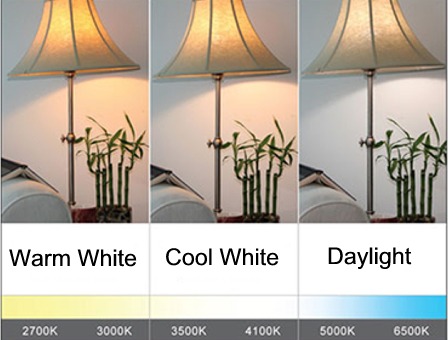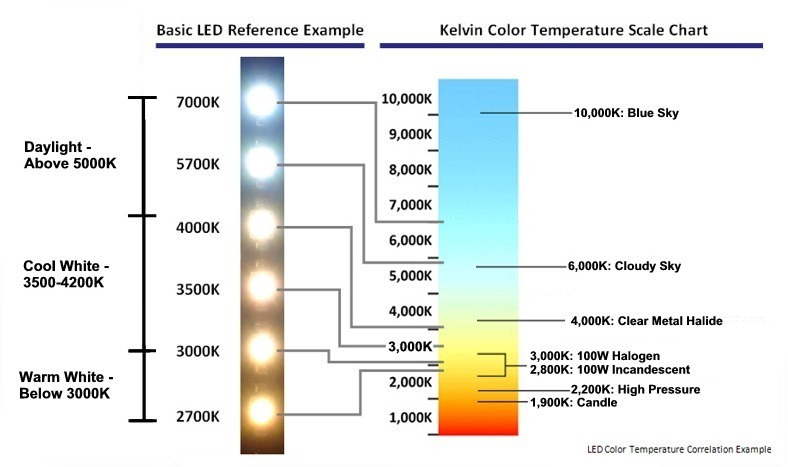LED (Light Emitting Diode) lights have their brightness measured in lumens. The more lumens, or luminosity, an LED light or fixture has, the brighter it's going to be. Color temperature is measured in Kelvins (K) and affects how the light will appear. Usually the higher the color temperature is, the more lumens, or higher brightness the light will have, but not always. Lights with the same number of lumens can have different color temperatures and while the higher color temperature may appear brighter, they technically have the same level of brightness.
How does Color Temperature affect the appearance?
Color temperature affects how you'll see your environment. The bulbs and fixtures carried by Major Electronix range from 2200K to 6000K.
- Lights that are 3000K or lower are typically referred to as warm white. Warm white has a more yellowish tint and most typically resembles the light cast by candlelight and most standard incandescent bulbs. It is most useful for residential interior applications.
- Lights from 3500K to 4200K are usually referred to as cool white or neutral white. Cool white has less yellow and more white in appearance. It is similar to the light produced by clear metal halide bulbs. This range is ideal for offices and kitchens.
- Lights that are 5000K or higher are called daylight bulbs. Daylight bulbs will have a more bluish tint. They often appear the brightest, as they give off a similar light what would be seen on a clear sunny day. Lights with a high color temperature are perfect for task lighting, accent lighting, or areas that are particularly dark.

LED Color Temperature Reference Chart
